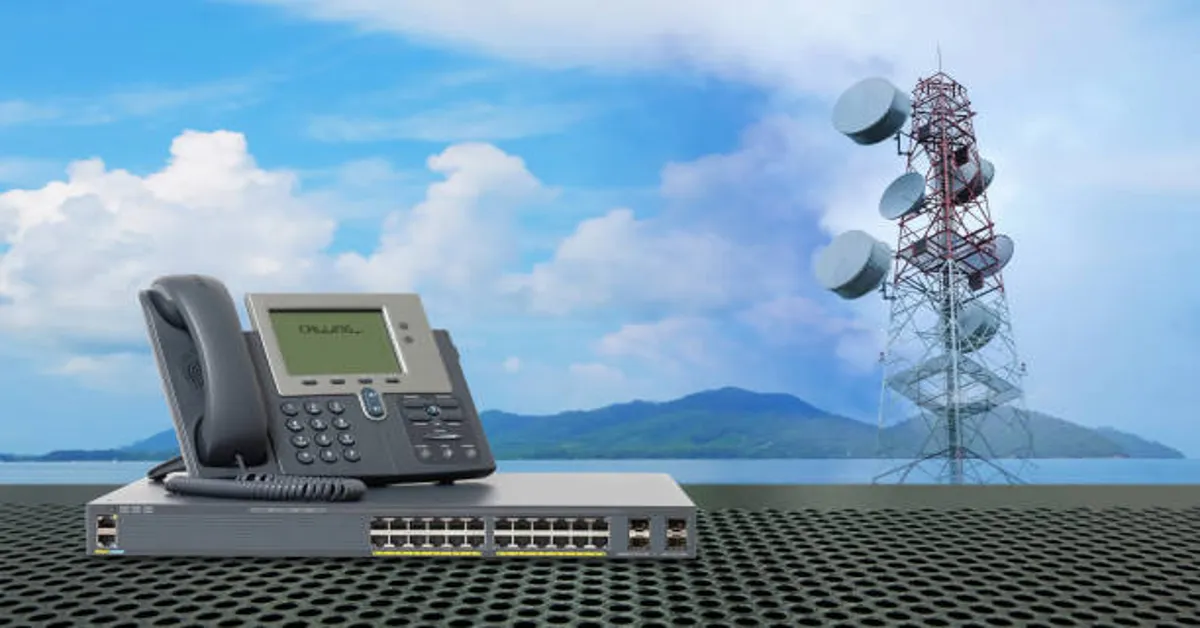In today’s digitally interconnected world, seamless communication is not a luxury—it’s a necessity. At the heart of every mobile phone call, every SMS message, and every internet connection lies a complex, well-orchestrated network of components, protocols, and systems working together in real time. Among these components, Any Time Interrogation (ATI) plays a critical role in facilitating the seamless flow of information between various network elements, especially in mobile networks.
Any Time Interrogation is a feature primarily associated with mobile telecommunications and network subscriber data management. It allows a network entity, such as a service control point (SCP), to query the Home Location Register (HLR) or Home Subscriber Server (HSS) to retrieve the latest information about a mobile subscriber at any given time. This function supports several vital services such as location tracking, real-time billing, service eligibility validation, and fraud prevention.
To fully appreciate the importance of Any Time Interrogation, one must delve into its components, technical functioning, practical applications, and its role in enhancing network efficiency and user experience. This article explores the concept in detail, addressing both technical and operational dimensions of ATI.
What is Any Time Interrogation?
In telecommunications, Any Time Interrogation (ATI) is defined as a network function that allows a querying entity, such as an application or node, to request and receive the current status or information about a mobile subscriber from the HLR or HSS at any point in time. It is a procedure that supports the dynamic retrieval of information related to subscriber identity, location, activity status, and service profile.
ATI is an important function within the GSM (Global System for Mobile Communications) and UMTS (Universal Mobile Telecommunications System) core network, especially in contexts where up-to-date subscriber information is critical. This capability is not restricted to a specific time or event, which means ATI can be triggered whenever required—hence the term “any time.”
The Core Components Involved in ATI
To understand ATI in action, it’s essential to familiarize yourself with the core components of the mobile network that participate in the process:
1. Home Location Register (HLR):
This is a central database used for storage and management of subscriber information in GSM networks. It contains permanent subscriber data such as International Mobile Subscriber Identity (IMSI), Mobile Station ISDN Number (MSISDN), subscribed services, and current location of the subscriber.
2. Home Subscriber Server (HSS):
In more advanced networks like LTE and 5G, the HSS replaces the HLR and functions similarly but with support for additional protocols and features. It acts as the main subscriber database and provides subscriber-related information for call and session establishment.
3. Service Control Point (SCP):
The SCP interacts with the HLR or HSS to request subscriber information. It may act on behalf of value-added services or real-time billing systems that need updated data.
4. Interrogating Entity:
This can be any system or application requiring up-to-date subscriber data. For example, real-time charging systems, fraud management systems, or lawful interception platforms.
How Does ATI Work?
The ATI process typically follows a series of steps designed to ensure secure and efficient data retrieval:
- Triggering an ATI Request:
An entity such as a charging system or an external application sends a request for subscriber data. This may be triggered by specific events (e.g., session initiation) or on-demand for data reconciliation. - Sending a MAP ATI Message:
In GSM/UMTS networks, the Mobile Application Part (MAP) protocol is used to send an ATI request to the HLR. The message format includes parameters such as the IMSI or MSISDN of the subscriber whose data is being queried. - Querying the HLR or HSS:
Upon receiving the request, the HLR/HSS locates the relevant subscriber data, which may include current location (such as VLR address), status (active/inactive), subscriber profile, and service restrictions. - Returning the ATI Response:
The HLR/HSS responds with the requested information, which is then used by the querying entity to make operational decisions, update records, or provide services.
Key Use Cases and Applications of ATI
Any Time Interrogation is utilized in a variety of network operations and value-added services. Its ability to provide real-time, up-to-date subscriber information makes it indispensable in the following areas:
1. Real-Time Charging and Billing Systems
Telecom operators rely on ATI to gather current subscriber data before applying charging rules. It ensures that customers are charged accurately based on their location, available services, or tariff plans.
2. Fraud Detection and Prevention
ATI enables fraud management systems to verify subscriber identity and location in real time. For example, if a subscriber logs in from two different locations within an implausible time frame, it may trigger a fraud alert.
3. Call Routing and Roaming Support
When a subscriber is roaming, ATI can be used to determine their current serving network or VLR, aiding in proper call routing and network resource optimization.
4. Service Provisioning and Eligibility Checks
ATI helps confirm whether a user is entitled to access certain services, especially premium or restricted services. It checks service subscriptions and location status before provisioning.
5. Emergency Services and Lawful Interception
Government agencies or emergency services may use ATI in compliance with legal frameworks to locate subscribers in emergency situations or for lawful interception of communication data.
Technical Standards and Protocols
ATI is governed by the technical standards defined by bodies like 3GPP (3rd Generation Partnership Project). The relevant specifications for ATI include:
- 3GPP TS 29.002: Defines the MAP application part messages including ATI.
- 3GPP TS 23.018: Specifies the procedures for subscriber information management.
- 3GPP TS 29.272 (for LTE): Describes Diameter-based messages used for subscriber data exchange in LTE/IMS networks.
Protocols Involved:
- MAP (Mobile Application Part): Used in GSM and UMTS for ATI signaling.
- Diameter: Used in LTE and IMS networks to query subscriber data.
- SMPP or SIP: May be used in conjunction with ATI procedures for messaging or voice-related services.
Security and Privacy Considerations
Since ATI involves access to sensitive subscriber data, strict security and privacy measures are enforced. Unauthorized or excessive use of ATI could lead to breaches of privacy, data leaks, or legal violations. Therefore, access to ATI functionality is typically controlled by:
- Authentication and Authorization: Only authorized systems can initiate ATI requests.
- Audit Logging: Every ATI query is logged for accountability and traceability.
- Encryption: Data exchanges between network elements are encrypted to prevent interception.
Additionally, operators implement policies that comply with national and international data protection regulations such as GDPR (General Data Protection Regulation) or the U.S. CCPA (California Consumer Privacy Act).
Benefits of ATI in Network Management
Implementing ATI in mobile networks offers several key advantages:
- Operational Efficiency: Helps network operators make real-time decisions based on accurate subscriber data.
- Improved User Experience: Ensures that subscribers receive consistent and personalized service regardless of their location.
- Revenue Assurance: Enhances charging accuracy and reduces revenue leakage.
- Compliance and Security: Supports legal obligations and enhances subscriber data protection.
Challenges and Limitations
Despite its advantages, ATI also comes with certain challenges:
- Network Load: Frequent ATI requests may increase signaling traffic and load on the HLR/HSS.
- Latency: High volumes of ATI queries can introduce delays in response, especially in peak times.
- Scalability: As the number of mobile subscribers grows, managing ATI requests becomes increasingly complex.
- Legal Constraints: Varying data privacy laws across countries can limit how ATI is implemented and used.
To mitigate these challenges, operators often implement intelligent throttling mechanisms, caching strategies, and load balancing solutions for handling ATI traffic efficiently.
Future of Any Time Interrogation in 5G Networks
With the advent of 5G and advanced network functions like network slicing and edge computing, the role of ATI is expected to evolve further. In 5G networks:
- UDM (Unified Data Management): Replaces HSS and serves as the new anchor for subscriber data in 5G core.
- Service-Based Architecture (SBA): Makes data retrieval more flexible and efficient.
- REST APIs and HTTP/2: Replace legacy signaling protocols like MAP, allowing more secure and scalable ATI-like functions.
These developments ensure that the principle of ATI—real-time, on-demand subscriber data access—remains integral to future telecom architectures, even as the technology stack changes.
ALSO READ: Understanding Management: Concepts, Functions, and Its Modern Evolution
Frequently Asked Questions (FAQs)
1. What is the purpose of Any Time Interrogation in mobile networks?
Any Time Interrogation allows network entities to access real-time subscriber information such as current location, service profile, and status from the HLR or HSS. It supports functions like billing, fraud prevention, service eligibility checks, and call routing.
2. Which systems typically use ATI in a telecom environment?
ATI is used by billing systems, fraud detection platforms, service control points, emergency services, and lawful interception systems that require up-to-date subscriber information to perform their functions.
3. Is Any Time Interrogation used in 5G networks?
Yes, the core concept of ATI exists in 5G networks, though it uses different infrastructure such as the Unified Data Management (UDM) and newer communication protocols like REST APIs instead of MAP.
4. Can ATI compromise subscriber privacy?
If not properly managed, ATI can pose privacy risks. Therefore, strict access control, logging, encryption, and compliance with data protection regulations are enforced to protect subscriber information.
5. What are the main protocols used for Any Time Interrogation?
In GSM/UMTS, ATI uses the MAP protocol. In LTE and 5G, ATI-like functions are supported via the Diameter protocol or RESTful APIs in service-based architecture environments.









